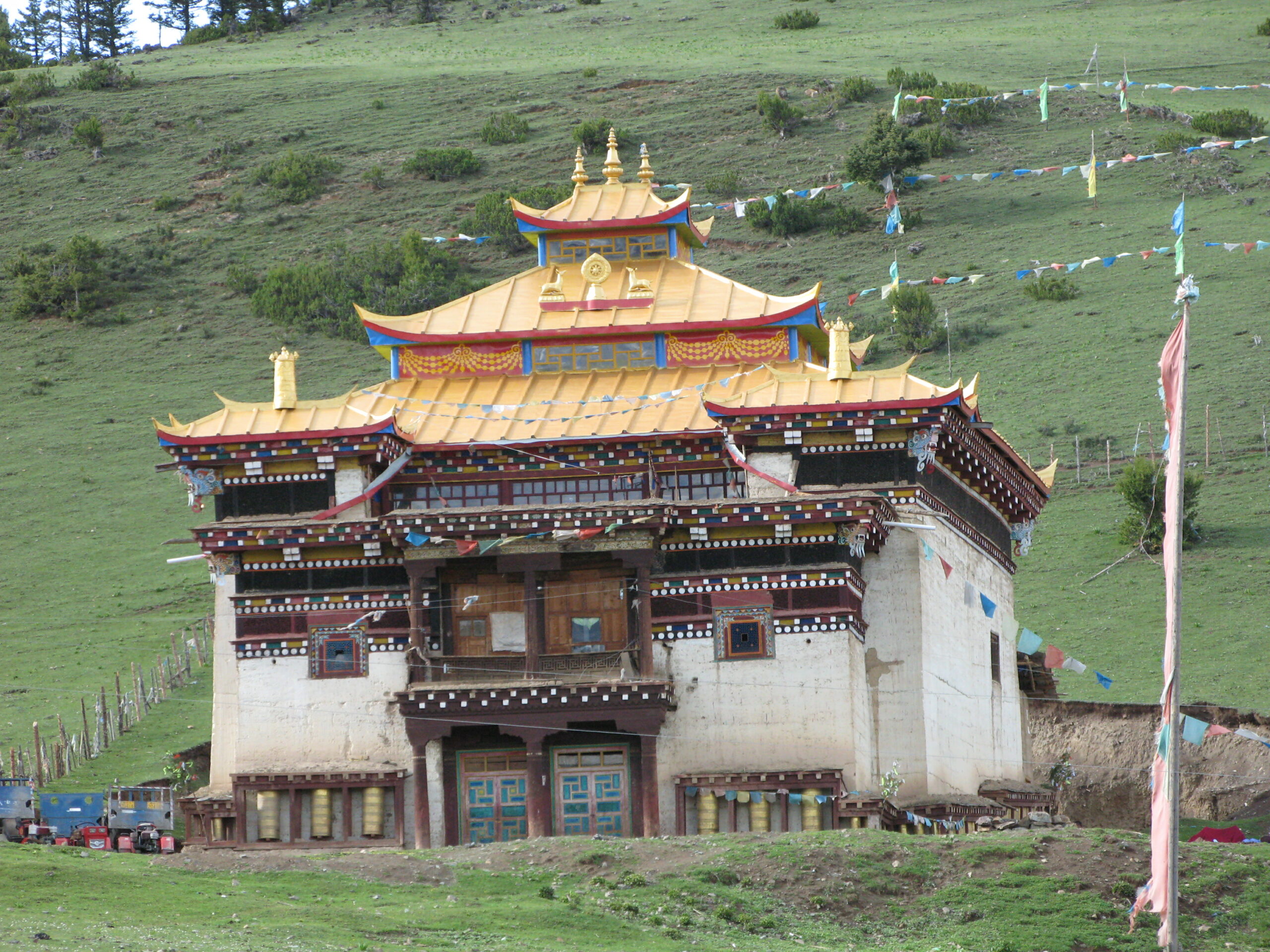
Photograph by Marc Des Jardins of Walkhyung Monastery in Nyarong where an early edition of the Bon Kanjur is preserved.
You may wonder about the sources of the texts BDRC digitizes and puts online for free global access. We do work with local partners in Asia to seek out previously undocumented texts in temples and libraries, and this has resulted in the discovery of rare texts that we have reintroduced to the broader tradition and global readership. However, we also rely intensely on existing publications of manuscripts that local preservationists have already recovered, edited, and published themselves. In other words, whenever an important collection of traditional religious texts is published in Asia we make every effort to amplify this preservation work by digitizing a copy and making it available on BDRC. Here are two inspiring examples that illustrate how crucial these efforts are for the continuation of Tibetan culture.
Over the past thirty plus years, local communities in Tibet have recovered, edited, and published thousands of volumes of texts that survived the Cultural Revolution. Tibetan lineage holders and lay scholars have uncovered thousands of volumes of old Buddhist and Bon texts from their places of safekeeping, found the means to make printable copies of them, and published numerous important collections. This work was a major component of the revitalization of Tibetan religion, culture, and language, and it did not stop with printing – digital preservation was the next and ongoing phase.
A Renaissance of Bon Kanjur Publications
In early June, renowned Tibetan Studies scholar Dan Martin wrote to us to say: "I'm very happy that scans of the 192 [volume] Bon Kanjur have been put up. Now I won't have to fly to Oslo to use it!" We are just as delighted to share this notable new addition to the BDRC archive — and the inspiring story behind it.
The Bon Kanjur (or Kangyur) consists of teachings attributed to Tonpa Shenrab, the legendary founder of the Tibetan Bon religion. Many of you are familiar with the Buddhist Kanjur, and the Bon Kanjur is the parallel canon for the Bon religion. In the 1970s it was not known whether a set of these teachings remained in existence, but in the 80s and 90s three distinct editions of the Bon Kanjur were expertly compiled and published in Tibet. The three large editions of the Bon Kanjur published over 15 years are a perfect example of the process whereby precious and rare manuscripts were rescued, arranged into meaningful new collections, and shared widely.
The 192 volume edition now available on BDRC is the second edition of this series, printed in Northern Sichuan in 1987, and cataloged by Per Kvaerne, Dan Martin & al. in "A catalog of the Bon Kanjur", 2003, Senri Ethnological Reports (SER) 40, National Museum of Ethnology, Osaka, (MW1ER172 on library.bdrc.io). It includes material not present in the first edition, which was printed in Chengdu in 1985 by Ayong Rinpoche (1922-1996) in 154 volumes. The 1985 edition in turn reproduces a set of volumes preserved near Walkhyung Monastery in Nyarong.
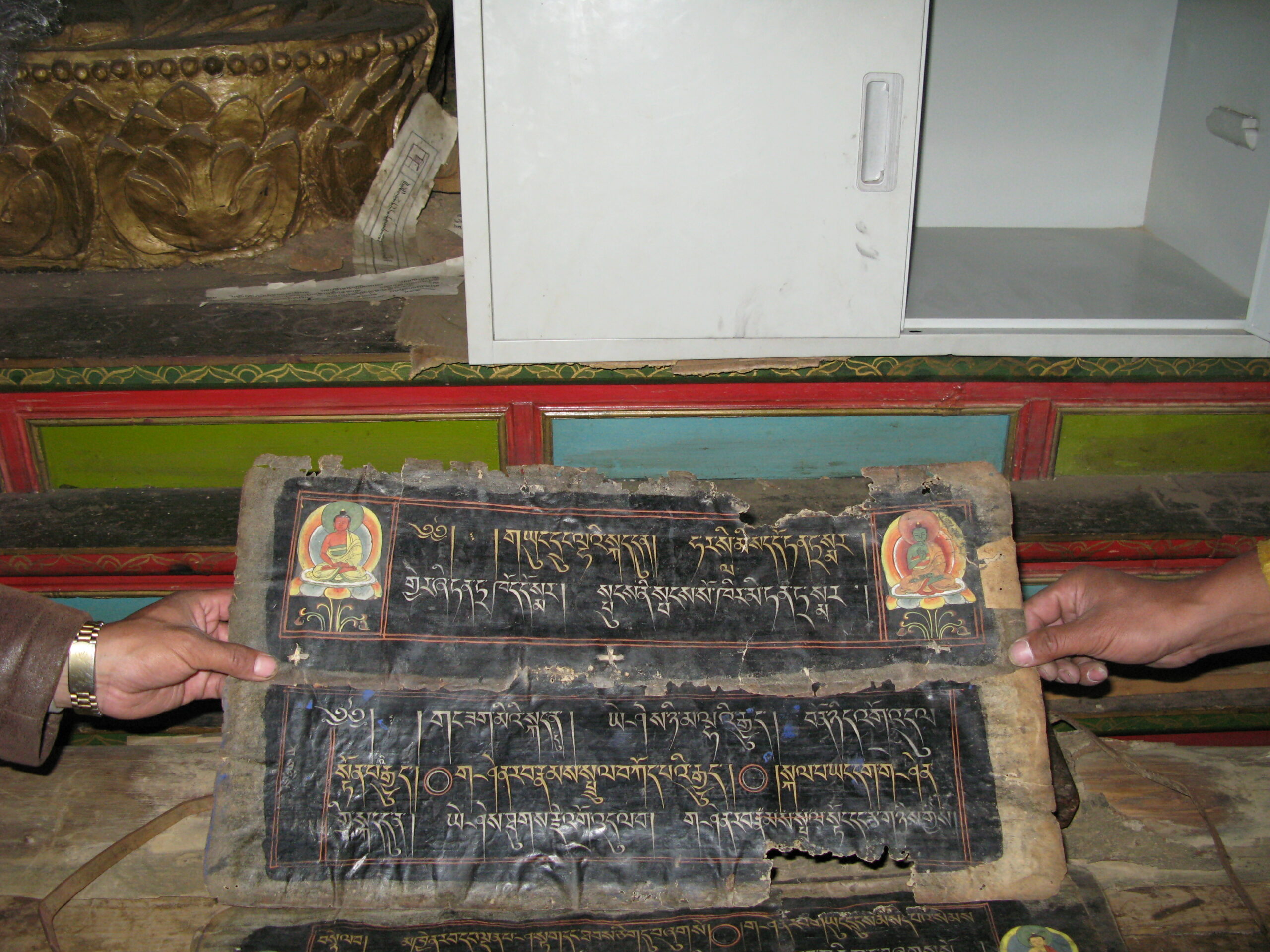
Above and below: an early edition of the Bon Kanjur at Walkhyung Monastery in Nyarong. Photographs by Marc Des Jardins.
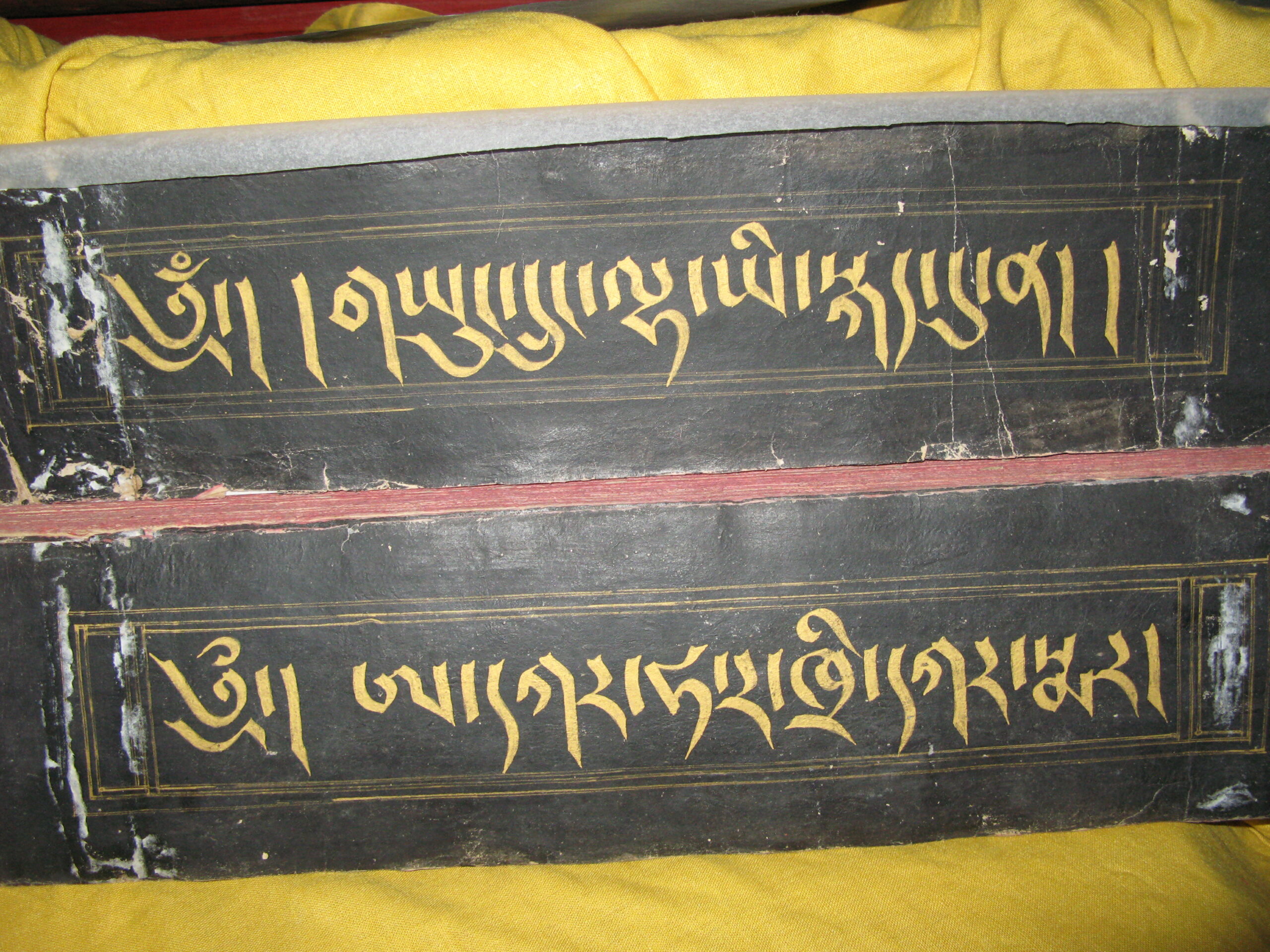
BDRC's modest contribution was to acquire the print copies, digitize them, and make them available freely online worldwide, so that anyone can view them without flying to Oslo, or leaving their home at all.
View the Bon Kanjur in the BDRC library at W4CZ58520. Please note that we are currently missing 25 volumes and welcome contributions to help fill these gaps.
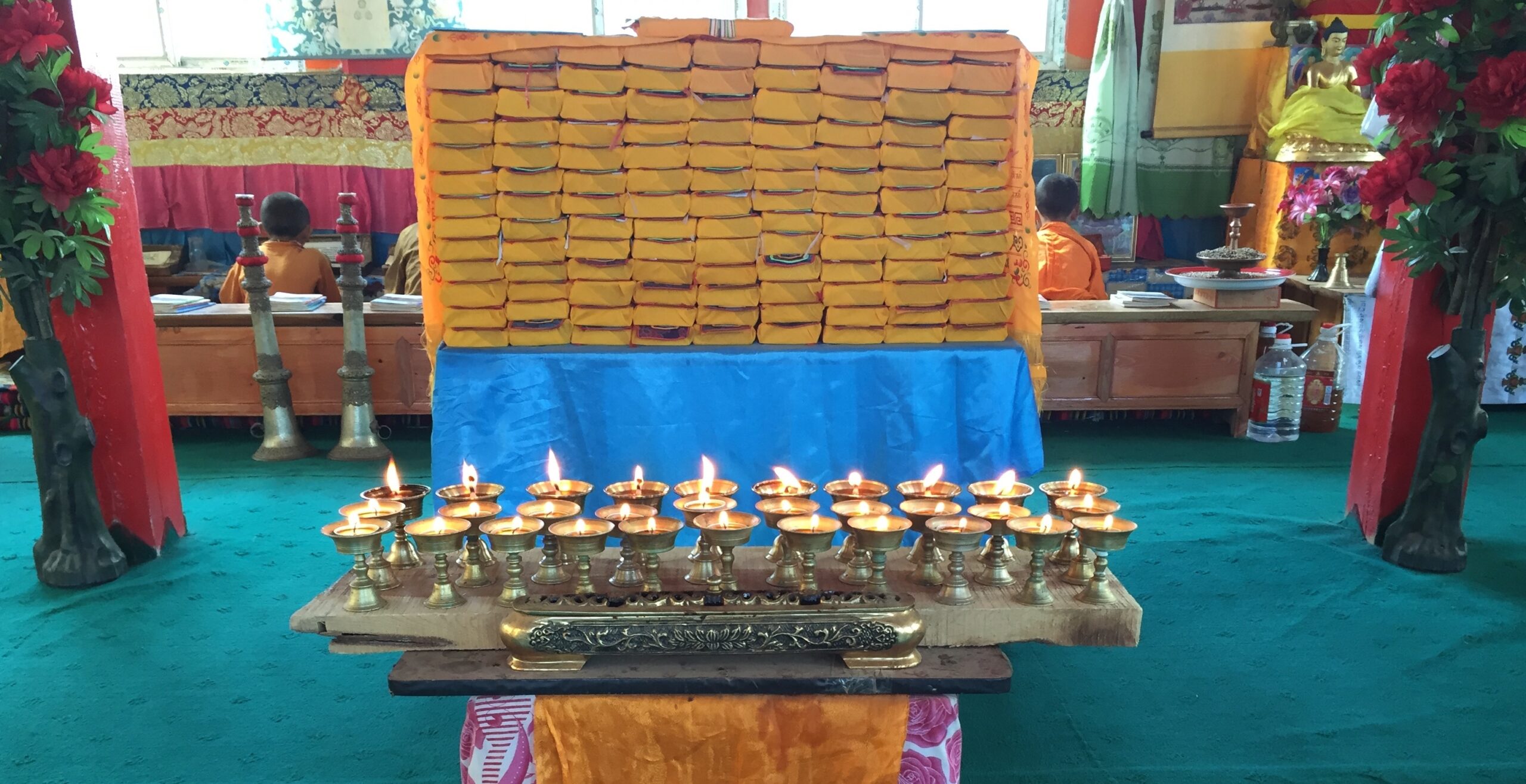
An altar at Chamjor Buddhist College bearing a neatly stacked tower of Buddhist manuscripts.
A Community Endeavor to Revitalize Religious Tradition
This series of images from the Buddhist College of Chamjor Monastery in Nyarong, Kham, illustrate how this inspiring work is carried out on the ground.
In 2016 when BDRC Executive Director Jann Ronis visited Chamjor Buddhist College, several scholar-monks were hard at work editing the Collected Terma Revelations of Nyakla Rangrig Dorje (1847-1903), an important disciple of the great master Nyakla Pema Dündul, who famously attained the rainbow body upon his death (1816-1872). There are 42 volumes in this collection and its associated traditions of transmission and meditation are still intact and vital.
In 2005 Zenkar Rinpoche was instrumental in publishing a black and white photocopy-quality reproduction of the original manuscripts, a project generously supported by Tsadra Foundation. (See photo below left.) BDRC obtained a copy of this publication, scanned it, and it has been available on our website for viewing and free downloading since 2007. (W1PD289 on library.bdrc.io)
Ten years after the initial publication, Chamjor Monastery oversaw a computer-input edition of the Collected Treasures of Rangrik Dorje. The inputting–or typing in– of the volumes provided the publisher with an opportunity to correct issues in the initial publication such as spelling mistakes, occasional issues with pagination and the order of texts within volumes, and the like. However, inputting texts can introduce new problems and therefore they need to be painstakingly edited.
The middle photo below shows some of the editorial team at their job, working in pairs to compare the input to the original manuscripts and also to check the input for mistakes. It's a time consuming job that took many months. The picture below right is a snapshot of their work schedule: starting at 8:00 am; breaking for tea at 11:00 am; resuming work at 1:00 pm, tea again at 4:00 pm with the work day ending at 7:00 pm. The final photo below shows the next generation of Chamjor monks and future scholars at their studies.
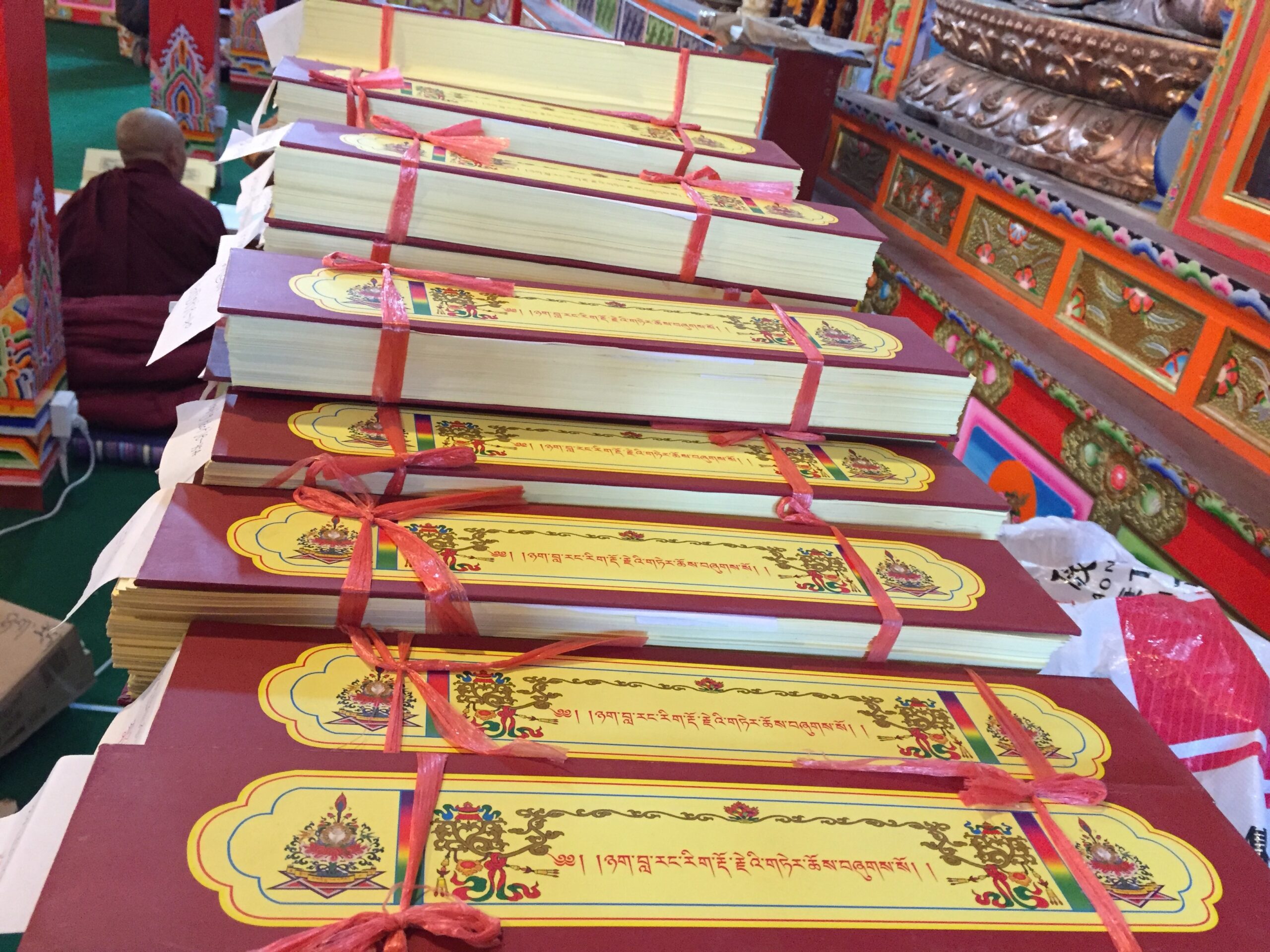
The Collected Terma Revelations of Nyakla Rangrig Dorje, published in 2005 in 42 volumes.
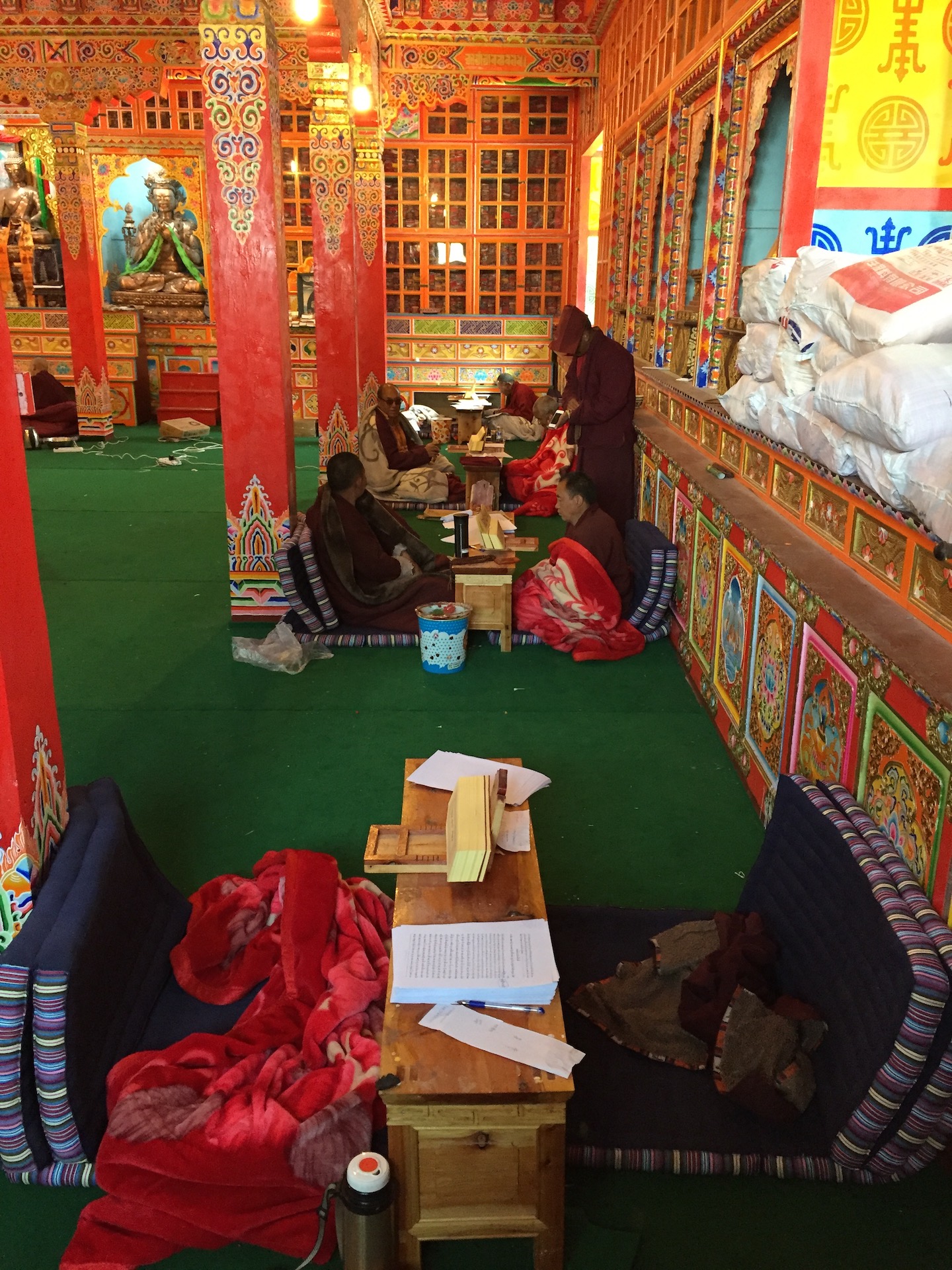
The editorial team at work checking the digital input of the text.
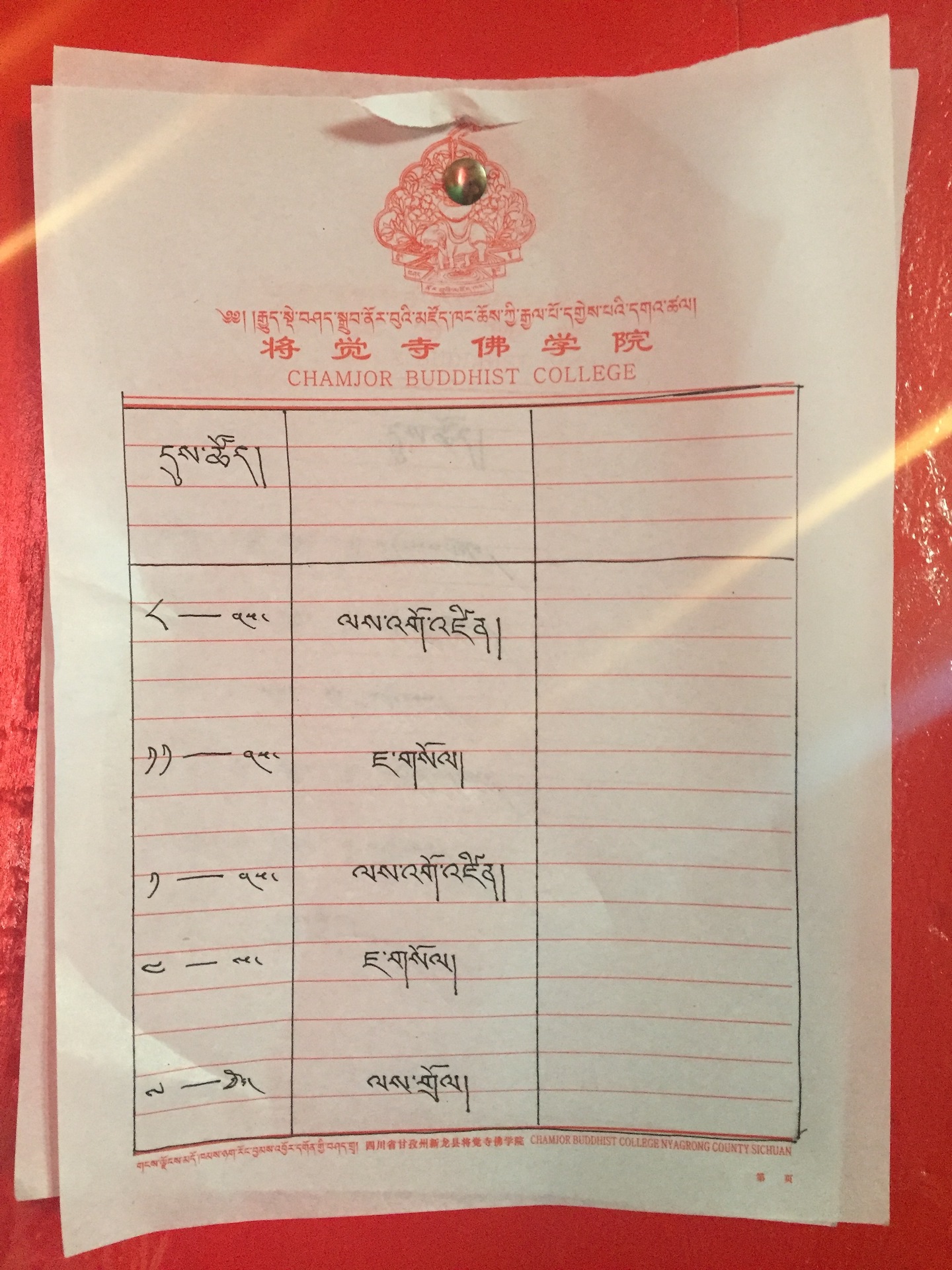
The editor's work schedule.
These are just two examples of many projects happening at the local level in Tibet at that time, and ongoing today. BDRC tries to help, when possible, and always tries to gain access to these special publications of rare texts from all traditions of Tibetan Buddhism and then to share them with Tibetans on both sides of the Himalayas, and practitioners and scholars around the globe.
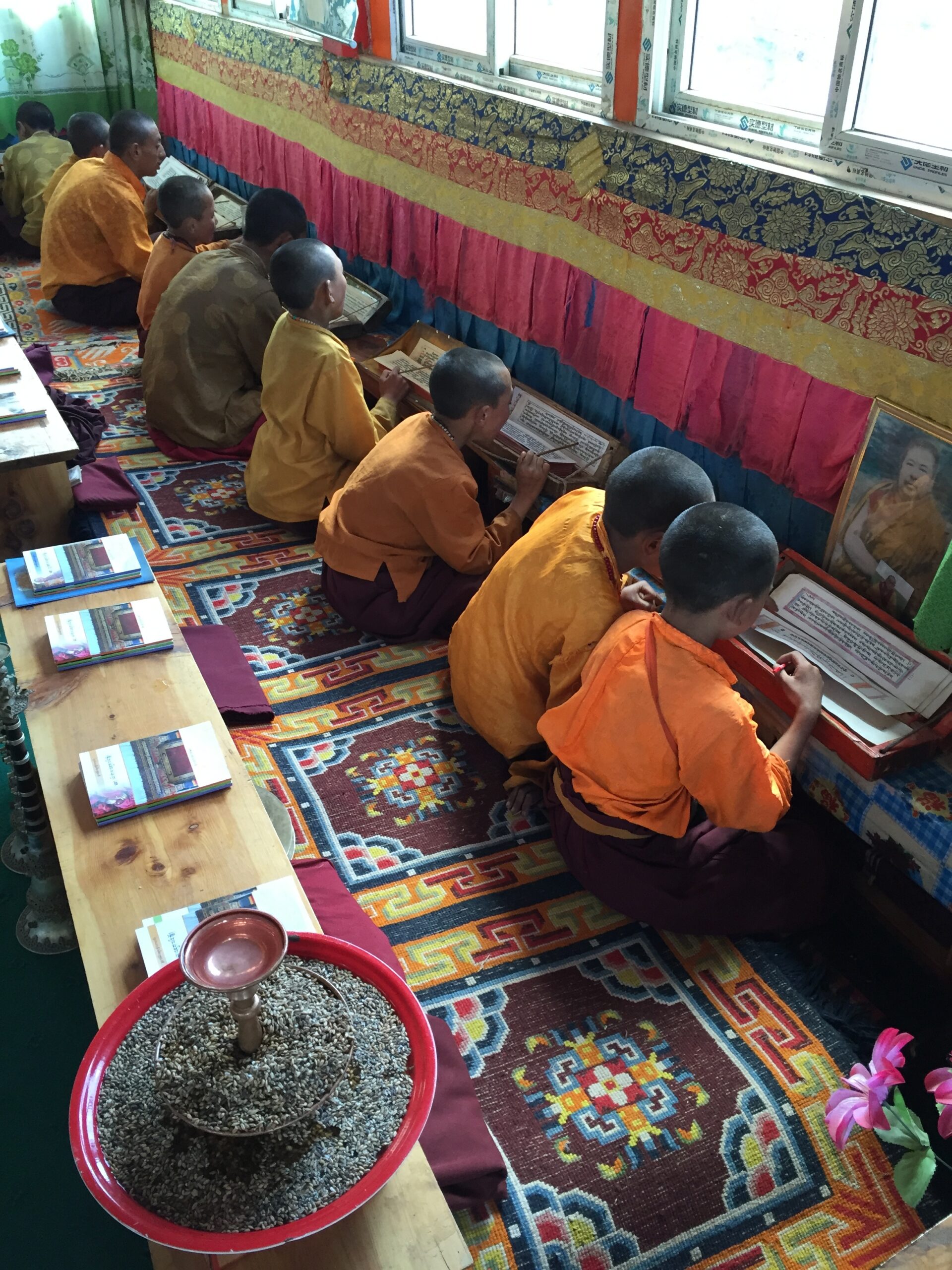
The next generation of monks at Chamjor Buddhist College at their studies.





Sorry, the comment form is closed at this time.